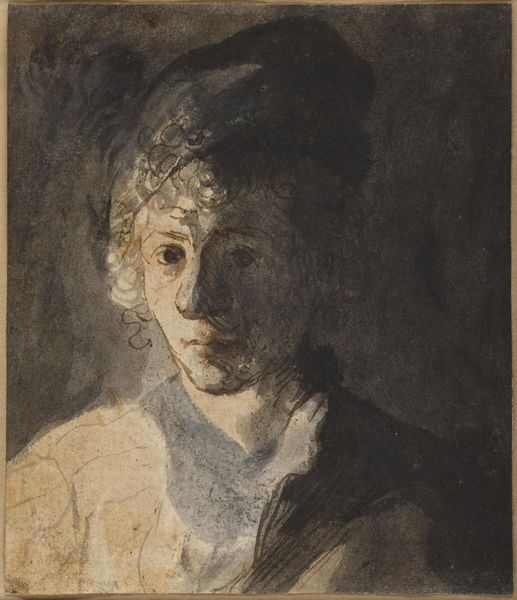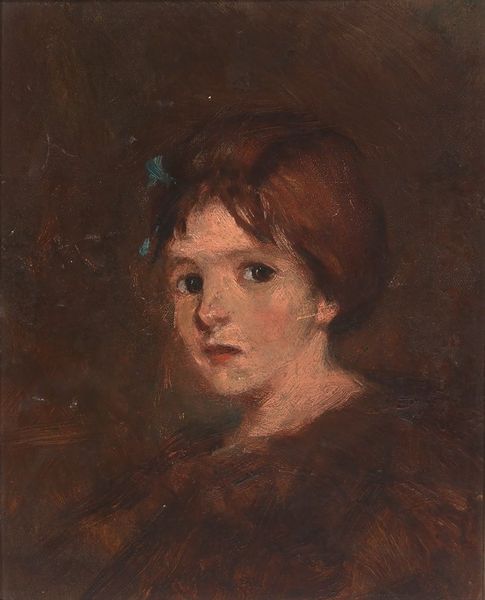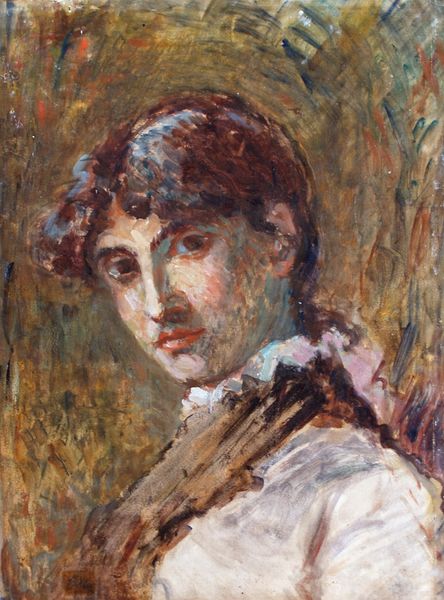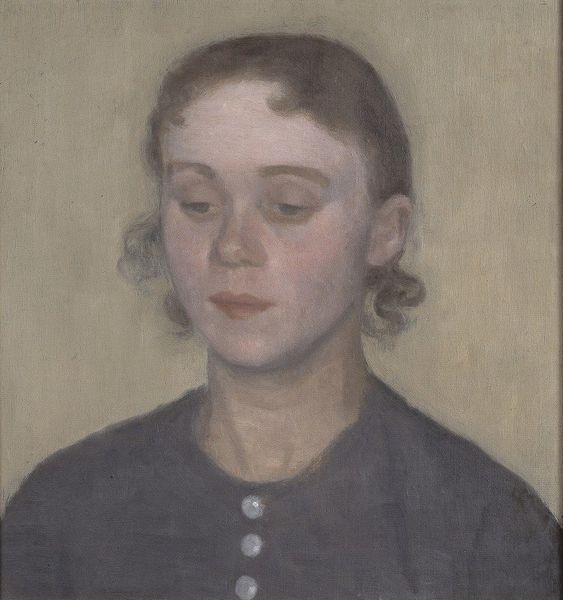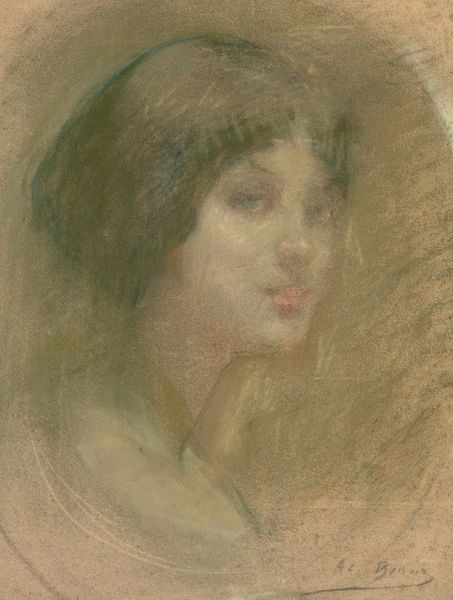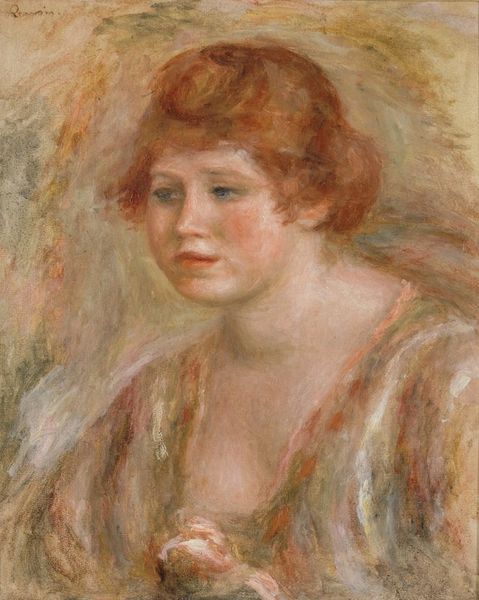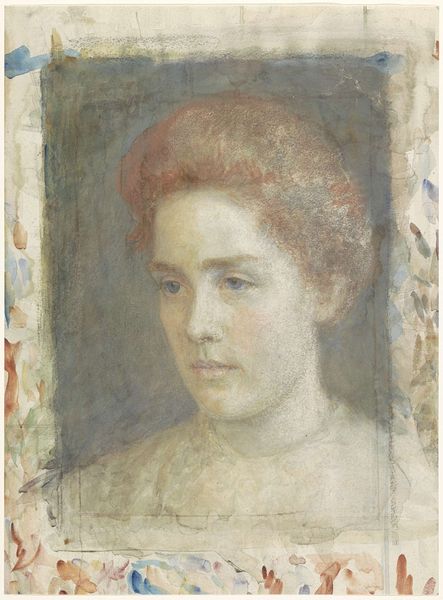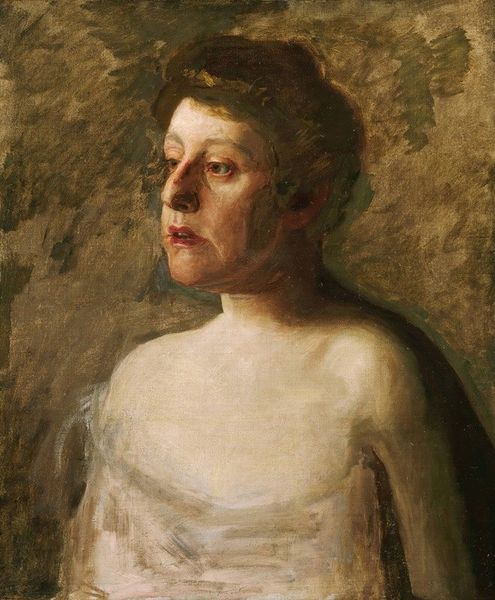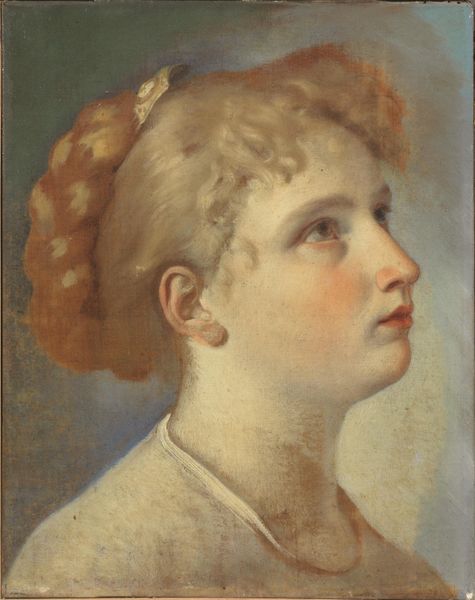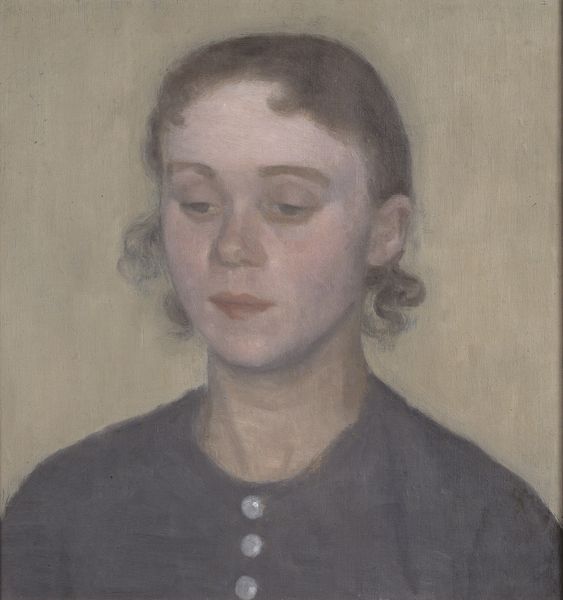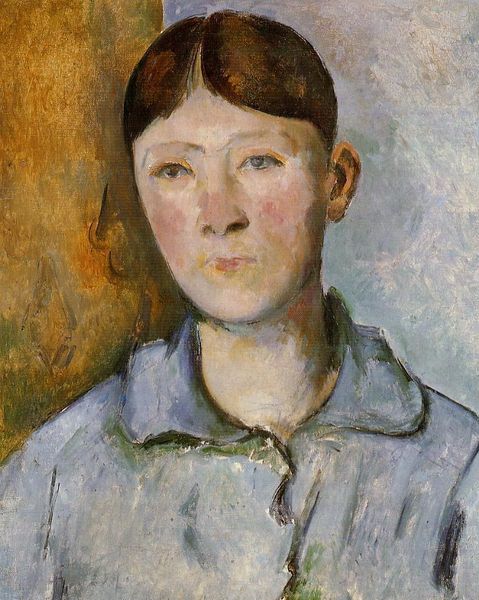
painting, oil-paint
#
portrait
#
figurative
#
self-portrait
#
painting
#
oil-paint
#
oil painting
#
expressionism
#
portrait drawing
#
portrait art
#
modernism
Copyright: Public Domain: Artvee
Curator: Standing before us is Paula Modersohn-Becker’s "Self-portrait" from approximately 1898. The artist used oil paint to depict herself in a way that's both intimate and assertive. Editor: It's captivating, really. There's a somber tone created by the muted color palette. And yet, those eyes... they suggest a fierce determination. The rough brushstrokes and visible canvas texture also hint at the rawness beneath the surface. Curator: I find it compelling to view this work within the larger context of female self-representation at the turn of the century. Self-portraits provided a space for women artists like Modersohn-Becker to explore their identities beyond the conventional roles assigned to them. They offered new archetypes. Editor: Absolutely. And looking closely, you see the subtle asymmetry in her features. The tilt of the head and unevenness of the eyes. This imperfection brings the work to life; a far cry from idealized beauty of academic portraits. It also brings to the surface many semiotic components about how we portray people in portraiture in order to emphasize realism or archetypal concepts of beauty. Curator: We should also consider the expressive potential in portraiture through color. It serves not only to illustrate realism, but it reinforces the internal struggles that women experience regarding beauty expectations and social positions. Note the use of ochre and brown, which contributes to the emotional resonance. Editor: I agree wholeheartedly. The earthy tones ground the piece and establish the sincerity and intent within the visual structure. Modersohn-Becker uses those same principles in her landscape paintings, as well. This connection really illuminates a unity across her ouevre. Curator: Indeed. Her artistic perspective provides us with invaluable visual artifacts for understanding art from that time period. It’s as though the symbol of the self-portrait is turned inward, prompting both artist and viewer alike to deeper questions. Editor: That introspective power still vibrates through the piece today, urging a continued examination of art's role in both mirroring and reshaping our very selves. I see those reflections throughout Modersohn-Becker’s artwork.
Comments
No comments
Be the first to comment and join the conversation on the ultimate creative platform.

